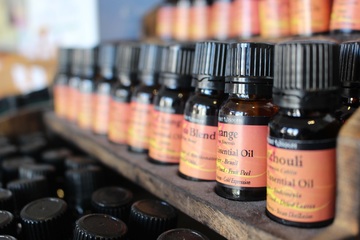While heating pads are a great option when dealing with certain types of pain, there are times when a traditional heating pad cannot provide optimal thermotherapy (i.e., heat therapy). For this reason, consider creating a DIY hot pack. Heat packs are ideal to use on the neck, over the knee, and around the elbow.
DIY Hot Pack vs. Heating Pad
A do-it-yourself moist heat pack works better than a heating pad when the area receiving therapy requires laying the heat over or around a specific part of the body. For example, a traditional heating pad lacks flexibility and is too big to address muscles on the back of the neck. Furthermore, the pad lacks the volume necessary to be effective. Therefore, to get the most out of heat therapy on the neck, the item transmitting the heat must be flexible and have the volume and weight necessary to reach all the muscles in the neck.
DIY Heat Pack: Your Filling Options
Moist heat is usually more beneficial than dry heat because it can penetrate deeper tissues quicker than dry heat can.
All the fillings below create a moist heat. Nonetheless, to ensure even heating, only use one type of fill.
Filler options:
- Uncooked rice (any rice will do)
- Buckwheat (whole seeds)
- Flaxseed (whole seeds)
- Oatmeal
DIY Heat Pack: Your Essential Oil Options
Lavender has a calming effect, which makes it one of the most popular essential oils for DIY heat packs.
Blends that boost the immune system are also good options:
- Lemon
- Orange
- Clove
- Cinnamon
Other essential oils to consider include:
- Peppermint
- Eucalyptus
- Sage
How To Create Your DIY Hot Pack
This do-it-yourself hot pack naturally provides moist heat.
What you need to make your DIY heat pack:
- A small cotton pillowcase or a sock to hold the fill. Choose the option that will work best for the area that needs treatment. For example, a sock is ideal for addressing muscles in the neck, and a small cotton pillowcase works well for hip pain.
- Filling: the amount of filling you need depends on the item you use as a container. Typically, anywhere from 4 to 6 cups will suffice.
- A sewing needle.
- Thread or twine.
- Scissors to cut the thread or twine.
- A large bowl.
- Essential oil (optional).
- Rubber gloves (optional). If you are using essential oil and plan to mix it into your fill with your hands, you may want to consider wearing rubber gloves.
Directions:
- Pour the filling into a large bowl.
- If you are using an essential oil, add ten drops of the oil to your fill.
- Mix the oil into the filling before placing it in the sock or pillowcase. If you are using your hands for mixing, remember to wear the gloves.
- Pour the filling into your container.
- If you are using a sock, you can tie it off or use twine to close it.
- If you’re using a cotton pillowcase, use the needle and thread to close it.
Using Your DIY Heat Pack
Once your do-it-yourself hot pack is complete, heat it in the microwave. You must avoid overheating your heat pack because you can burn the filler. Typically, one minute and 30 seconds in the microwave is ideal. Before placing the hot pack on your body, make sure the hot pack’s temperature is suitable.
Place your hot pack on the treatment area for 15 to 20 minutes. Any longer than that could counteract the benefits that heat provides. You can reapply the heat pack every eight hours.
Types of Pain Your DIY Hot Pack Can Help Relieve
Heat therapy helps decrease the pain that is associated with numerous conditions. However, people who have multiple sclerosis (MS) should avoid using heat to relieve pain. Using heat will actually exacerbate the pain an individual with MS is experiencing.
The issues that thermotherapy can help with are:
- Rheumatoid arthritis.
- Osteoarthritis.
- Tense muscles.
- Nerve pain (e.g., sciatica).
Remember that for the first 72 hours after sustaining an injury, you must use ice because heat promotes blood flow, which increases inflammation.
To learn how to create your own DIY cold pack, please click here.
Sources:
- https://www.webmd.com/pain-management/when-use-heat-ice
- https://organized31.com/diy-rice-heat-packs/
- https://connect.mayoclinic.org/blog/take-charge-healthy-aging/newsfeed-post/using-heat-and-cold-for-pain
- https://myhealth.alberta.ca/Health/pages/conditions.aspx?hwid=acn6587&lang=en-ca
- https://www.morewithlesstoday.com/homemade-heating-pad/

